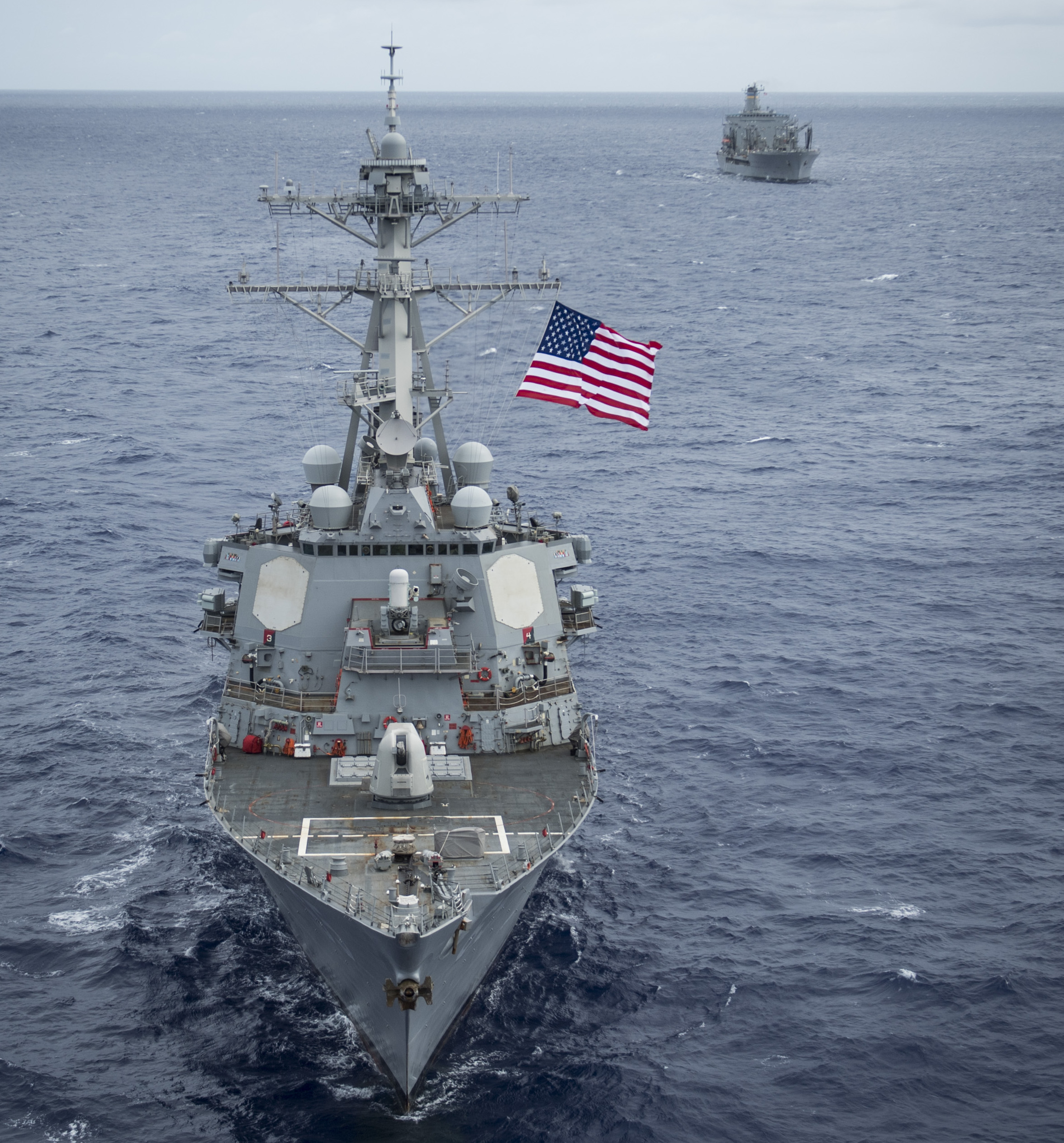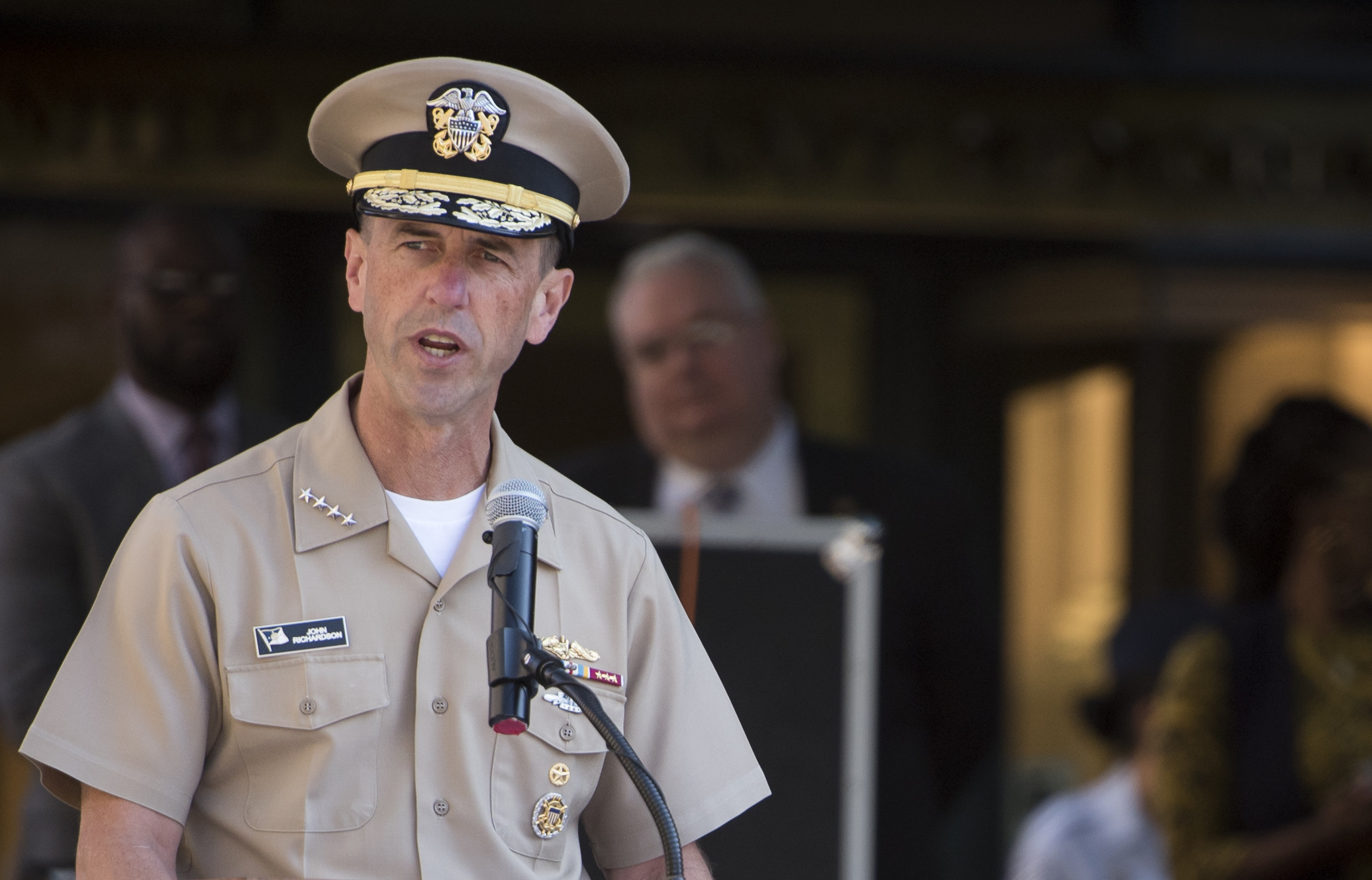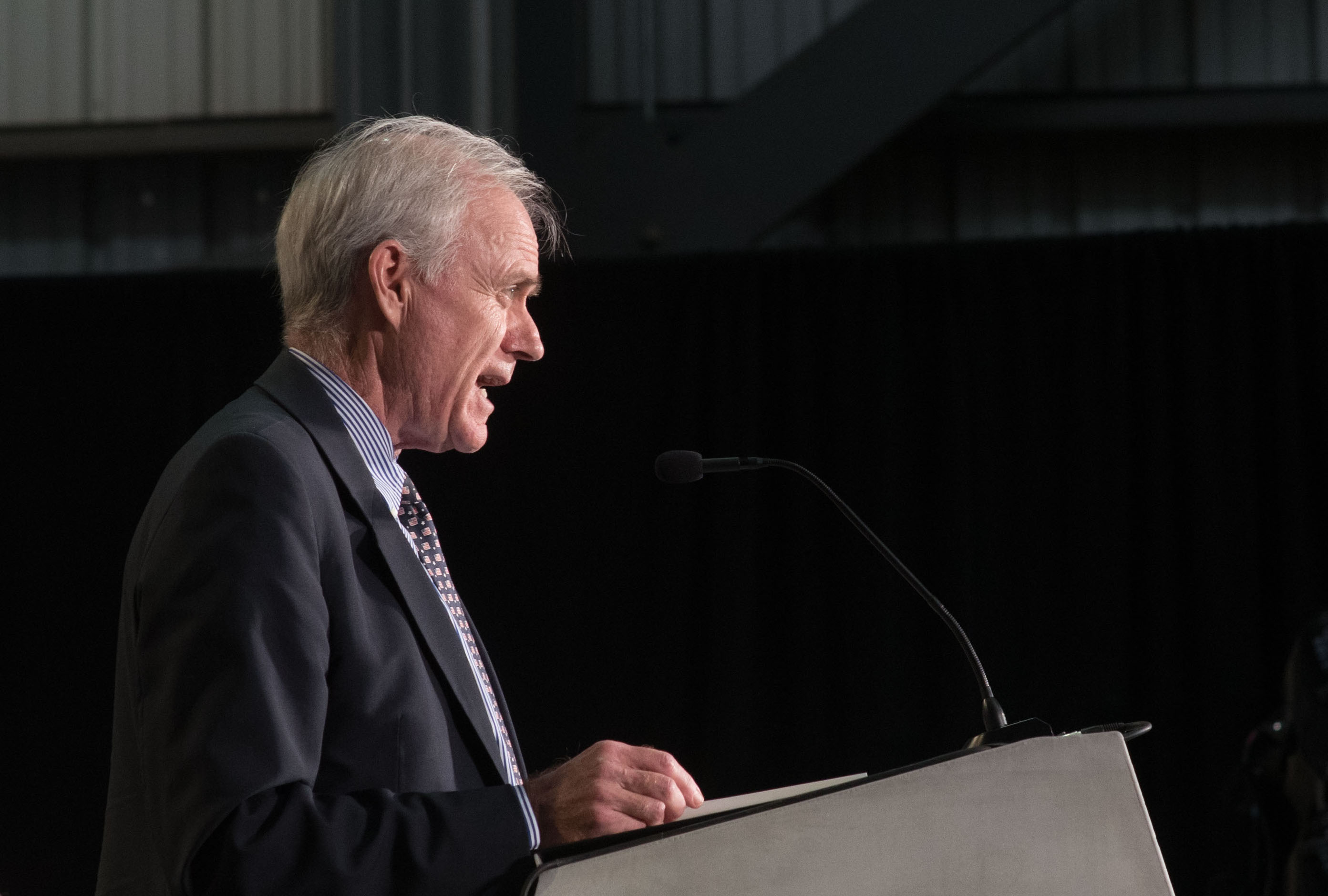
This post has been updated to include additional information from the Senate Armed Services Committee hearing.
CAPITOL HILL – The Navy is creating a new Naval Surface Group Western Pacific to train and certify forward-deployed surface ships operating out of Japan and has begun additional readiness assessments and certifications, after four surface ship collisions and groundings in the region that killed 17 sailors this year.
Chief of Naval Operations Adm. John Richardson told the Senate Armed Services Committee this morning, “what we do is inherently dangerous. It is a leadership responsibility to ensure we provide the right oversight and training to keep our team at their operational peak. We are taking immediate actions to prevent another mishap,” according to his prepared opening remarks.
To that end, the Navy “commenced Readiness for Sea Assessments (RFSA) for all ships assigned to Japan, to inspect and assess watchstander proficiency and material readiness to ensure ships are able to safely navigate, communicate and operate. Immediate remediation will be conducted for ships found deficient, and they will not be assigned for operational tasking until they are certified to be ready.”

More broadly in the surface ship community, “we have commenced a review of certifications of each ship, to include developing a plan for each to regain currency and proficiency across all certification areas. All waivers for ships whose certification has expired will now be approved by the Pacific Fleet Commander.”
In addition, the PACFLT commander is standing up the Naval Surface Group Western Pacific “to consolidate authorities to oversee the training and certification of forward-deployed ships based in Japan.”
On the personnel readiness side, Commander of Naval Surface Forces Vice Adm. Tom Rowden recently mandated that ship crews move to a 24-hour circadian rhythm watchstanding rotation, to allow sailors to get regularly scheduled sleep that their bodies can adjust to, Richardson explained during the hearing. This schedule had been recommended previously and implemented on some ships, but now all surface ships will develop this type of schedule for at-sea operations. Richardson said the change has not yet been mandated for ships in port, but that in-port workload and watchstanding rotation is being studied now. Additionally, to combat the 100-plus hours a week sailors sometimes work – which contributes to lack of sleep – “we’re starting to respond to that by supplementing the crews,” he said.
“There are measurable degradations in decision-making and in performance” when sailors do not get proper sleep, CNO noted.
On the ship side, Richardson said that simple steps such as turning on warships’ automatic identification system (AIS), which shows the location of commercial and military ships in the water, would increase warships’ visibility in congested waterways and potentially prevent future mishaps. The material readiness of the forward-deployed surface ships will also become more of a priority, with problems involving ship control systems being given an increased priority for repairs going forward, Richardson added.
On Aug. 21 Richardson directed and operational pause to ensure commands around the globe could stop and focus on basic operations and safety. He said in his opening statement that “the pause yielded results across all communities to promote a renewed focus on safety, communication and professionalism in the execution of ‘routine’ operations. Leaders at every level addressed fighting against over-confidence, inattention, and complacency through emphasis on adherence to procedures and on applying sound operational risk management procedures. We will continue to enhance our safety culture in which each sailor is empowered to act to control hazards before they become a mishap.”
In addition to measures to make future operations safer, the Navy has reprimanded 20 sailors in the aftermath of the fatal USS Fitzgerald (DDG-62) and USS John S. McCain (DDG-56) collisions this year, SASC chairman Sen. John McCain (R-Ariz.) said during his opening statement. A Navy official confirmed that number to USNI News and said those reprimands went to a range of senior enlisted sailors and junior officers charged with operating the bridge and combat information center Fitzgerald and McCain.
These punishments come on top of six officers being removed from their positions as a result of the fatal crashes: the command triad of Fitzgerald, commanding officer Cmdr. Bryce Benson, executive officer Cmdr. Sean Babbitt and command master chief CMC Brice Baldwin; U.S. 7th Fleet commander Vice Adm. Joseph Aucoin, who was relieved of duty just weeks ahead of his planned retirement; and Rear Adm. Charles Williams, commander of Combined Task Force 70, and Capt. Jeffery Bennett, commodore of Destroyer Squadron 15, who were removed from their jobs earlier this week.
Navy Secretary Richard V. Spencer noted in his opening statement at the hearing that these immediate changes and punishments were not the end of the Navy’s effort to improve the surface fleet and would be followed up by longer-term and higher-level changes.

“We have a problem in the Navy and we’re going to fix it. In addition to the investigations already initiated, we are conducting two thorough reviews,” he said.
“The CNO’s Comprehensive Review will take a look at the tactical and operational situation. My Strategic Readiness Review will be an independent team comprised of military and industry experts that will look at and examine root causes, accountability, long term systemic issues, and then provide remedial insight. These reviews will complement and enhance each other, providing the depth and criticality the situation demands.
Without deflecting blame from the Navy, Richardson did acknowledge a “triple whammy” dealt by Congress – “the corrosive confluence of high operational tempo, constrained funding levels, and budget uncertainty” – as a contributor to readiness problems in the service. He said the Navy had been asked to do more with less, with operational requirements taking away from training and maintenance time and forcing surface ship crews to be on station more often and sometimes with less notice.
“None of these can excuse our commanders from adherence to the absolute standard to develop safe and effective teams. And when we fall short of the ideal, we must make a thoughtful assessment of the results, and where necessary put mitigations in place. If the situation becomes untenable and we cannot meet the standard, we must not deploy until we’re ready. It is the diligence and leadership of our commanding officers at every level that will implement the changes needed to ensure our Navy remains the world’s most capable Navy,” he said.
“These incidents demand our full attention to provide our Sailors the necessary resources and training to execute their assigned missions. I own this problem. I am accountable for the safe and effective operations of our Navy, and we will fix this. I am confident that our Navy will identify the root causes and correct them, and that we’ll be better in the end. I look forward to your questions.”





